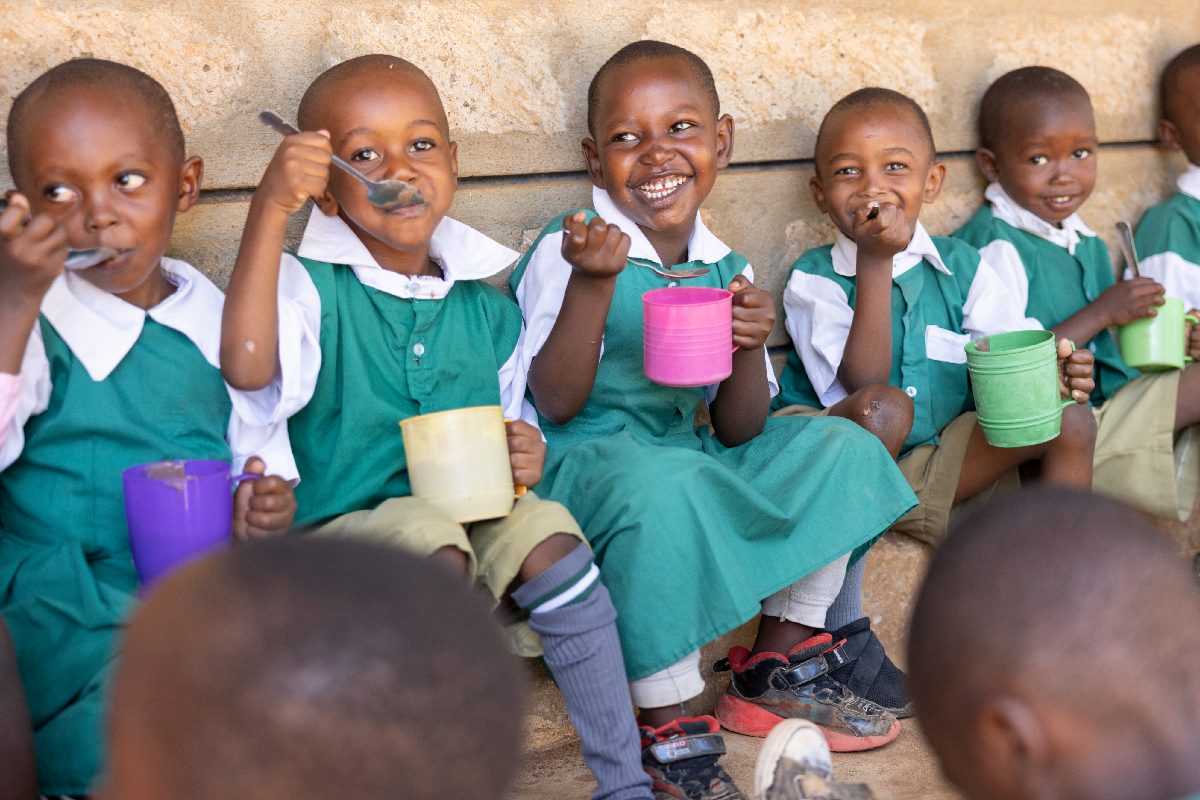
Chege Ngugi

Children enjoy a nutritious breakfast of millet porridge at an Early Childhood Development (ECD) center built by ChildFund in Makueni County. Each morning, ChildFund provides this vitamin- and nutrient-rich porridge, and for lunch, children are served moringa-enriched githeri (a mix of maize and beans).
This is how Africa can solve food insecurity in post-pandemic era
The African Union declared 2022 the Year of Food Security and Nutrition, yet several factors have left millions facing starvation. From droughts to rising fuel and energy prices coupled with record-high prices of basic food commodities, malnutrition and hunger is shaping up to be the new reality for way too many children and their families. Just when millions of households were recovering from the debilitating effects of the Covid-19 pandemic, things seem to be getting worse.
According to reports, it is estimated that 38.3 million people are facing acute food insecurity between June and August across Africa. This number is expected to rise to an unprecedented level if humanitarian interventions are not scaled up. The number of people affected in West and Central Africa is expected to reach a record high in June – quadrupling in just three years from 10.7 million in 2019 to 41 million in 2022, while IGAD reports that an estimated 29 million people in Eastern Africa are currently facing high levels of food insecurity due to prolonged drought as rains are projected to fail for a fourth consecutive season.
For instance, due to the failure of the rains in eastern and northern Kenya, most Arid and Semi-Arid Lands are experiencing critical drought conditions leaving at least 3.5 million people facing severe hunger. About 755,000 children under the age of five and 103,000 pregnant and/or lactating women are to likely suffer from acute malnutrition.
The drought has also led to the loss of livestock and crops. Data from the National Drought Management Authority indicates that up to 1.5 million livestock died between October 2021 and March 2022. Many water sources have dried up, increasing trekking distances to access water, which means more children are dropping out of school to join their parents in search of water for their families and livestock.
On the other hand, the inflation rate in the country rose to 7.1% in May 2022, the highest since February 2020 – and the cost of basic food commodities has continued to rise sharply, driven by Russia – Ukraine war and declining palm oil imports from Indonesia.
Russia’s invasion of Ukraine has affected exports from the two countries, which account for 26% of wheat exports globally and 80% of the world’s exports of sunflower oil, according to the Food and Agriculture Organization (FAO). Fourteen African countries depend on Russia and Ukraine for more than half of their wheat imports. FAO warns that the conflict could lead to as many as 13.1 million people going hungry between 2022 and 2026, globally.
This situation is replicated in several countries. In neighboring Uganda, households and traders are grappling with record-high prices of essential commodities such as wheat and sunflower oil.
From our work with affected communities in different countries in Africa, we know that during such a crisis, the biggest victims are children, girls and women. Pregnant and breastfeeding women, in particular, are at greater risk of malnutrition and stress. Traditionally, when food is scarce, women eat last, least or not at all, while children lack access to adequate, let alone, nutritious foods.
To mitigate this situation, concerted efforts by all stakeholders are required urgently. Governments, development partners, corporates, donors, communities and the media must work together to find sustainable solutions. Investment in sustainable food systems that are environmentally sustainable and resilient and inclusive of poor and marginalized populations, remains a priority.
Interventions to cushion food-insecure households are necessary to navigate this difficult period. For example, there is a need to implement school feeding programs in the worst-hit areas to provide children with food and allow them to continue their education. In some cases, this is the only meal a child will have in a day. Or consider reviving mobile schools that follow the pastoralists as they move with their children and livestock. For pregnant and lactating women, interventions to ensure they receive adequate nutritious foods and healthcare services should be scaled up. Domestic price controls, social protection programs, food subsidies and export restrictions will also help to alleviate the crisis.
Vulnerable households, be they in urban or rural areas, must be supported to ensure their right to adequate food is protected. These households are typically the most affected by high food prices – as their purchasing power is eroded affecting other facets of their lives and harming their overall wellbeing.
In the medium and long-term, food sustainability and self-sufficiency must be Africa’s goal. The continent remains an overly dependent importer of food despite hosting 60% of the world’s arable land.
All stakeholders must pool their resources to support investments in developing agriculture, livestock and fisheries, which will guarantee enhanced and sustainable food production. There must also be a pathway created for African countries with food surpluses to supply those with deficits in times such as these.
This opinion-editorial was first published by The Daily Nation.




